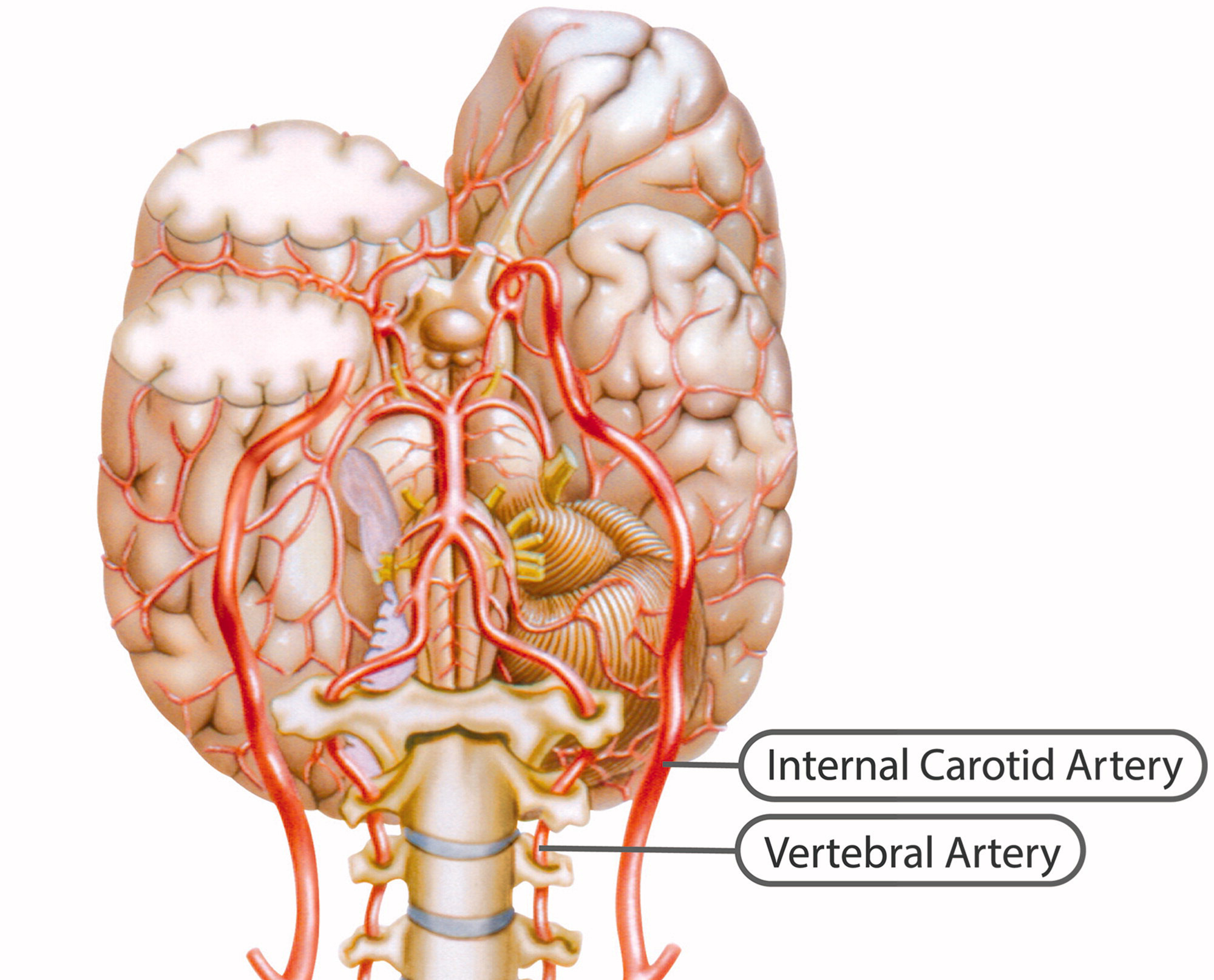Vertebral Artery Dissection as a Cause of Cervical Radiculopathy
SOURCE: Asian Spine J. 2013 (Dec); 7 (4): 335–338
Benjamin Isaac Silbert, Mark Khangure, and
Peter Linton Silbert
Department of Neurology,
Royal Perth Hospital,
Perth, Australia.
The acute onset of neck pain and arm weakness is most commonly due to cervical radiculopathy or inflammatory brachial plexopathy. Rarely, extracranial vertebral artery dissection may cause radiculopathy in the absence of brainstem ischemia. We describe a case of vertebral artery dissection presenting as cervical radiculopathy in a previously healthy 43-year-old woman who presented with proximal left arm weakness and neck pain aggravated by movement. Cervical magnetic resonance imaging (MRI) and angiography revealed dissection of the left vertebral artery with an intramural hematoma compressing the left C5 and C6 nerve roots. Antiplatelet treatment was commenced, and full power returned after 2 months. Recognition of vertebral artery dissection on cervical MRI as a possible cause of cervical radiculopathy is important to avoid interventions within the intervertebral foramen such as surgery or nerve root sleeve injection. Treatment with antithrombotic agents is important to prevent secondary ischemic events.
KEYWORDS: Cervical spine; Neck pain; Radiculopathy; Vertebral artery dissection
From the FULL TEXT Article:
Introduction
There are more articles like this @ our:
In patients presenting with neck pain and arm weakness a multitude of pathologies, ranging from the benign to those potentially fatal, must be considered in the differential diagnosis. On cervical magnetic resonance imaging (MRI), the absence of discogenic or other structural causes for compression provides clinical direction to consider other causes such as inflammatory brachial plexopathy or the more recently recognised entity of vertebral artery dissection (VAD)-associated cervical radiculopathy. The typical presentation of VAD is with neck pain and occipital headache, which is often misinterpreted as musculoskeletal in nature until focal neurological signs appear. [1] Occlusion of the vertebral artery commonly results in brainstem ischemia (e.g., lateral medullary syndrome), however in a small minority of patients perfusion is unaffected and in these patients there may be evidence of cervical radiculopathy if the dissecting vertebral artery compresses the adjacent spinal nerve roots. Predisposing incidents such as sudden neck movements may be a factor in VAD, but also in discogenic cervical radiculopathies and other entities from which they must be distinguished by imaging. Identification of VAD-associated radiculopathy is essential to avoid interventions such as surgery or nerve root sleeve injection.
Case Report
A 43-year-old woman awoke with left cervical discomfort 10 days before presentation. The discomfort radiated to the trapezius and scapular region, and was aggravated by neck movement. 4 days after awakening with cervical discomfort, she noted the inability to abduct her left arm. In retrospect, she recalled mild left upper cervical discomfort on neck rotation to the left while reversing her car about 4 days before the symptoms began. On examination, she had weakness involving the left deltoid, supraspinatus, infraspinatus and biceps muscles (4/5), with milder weakness of left forearm pronation and supination (4+/5). The left biceps reflex was absent and the left brachioradialis reflex reduced. The remainder of the neurological examination including left upper limb sensory examination and cranial nerve examination was normal.
Read the rest of this Full Text article now!



Leave A Comment